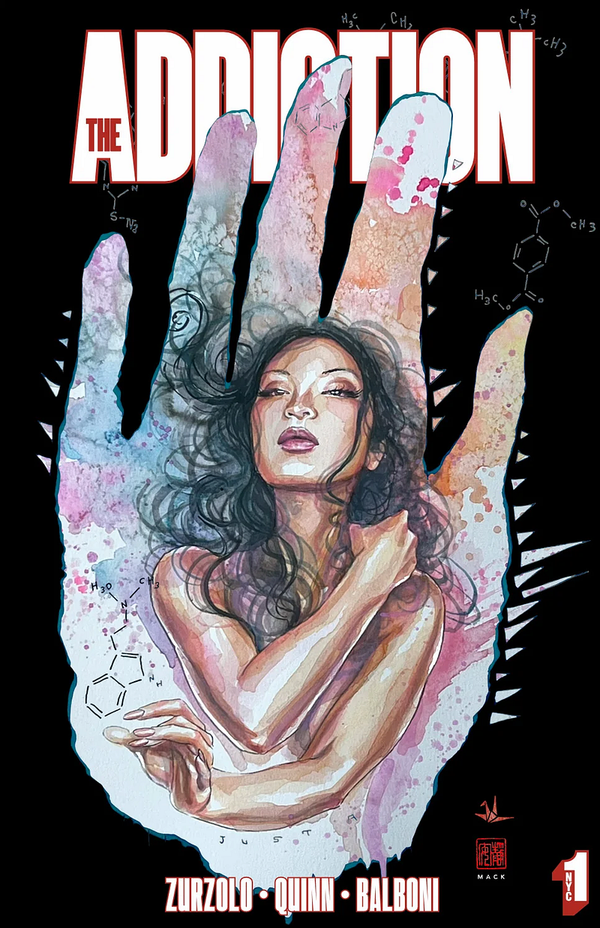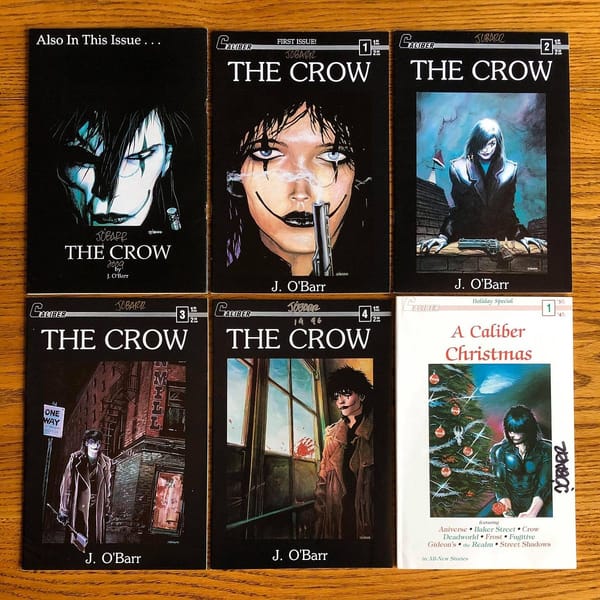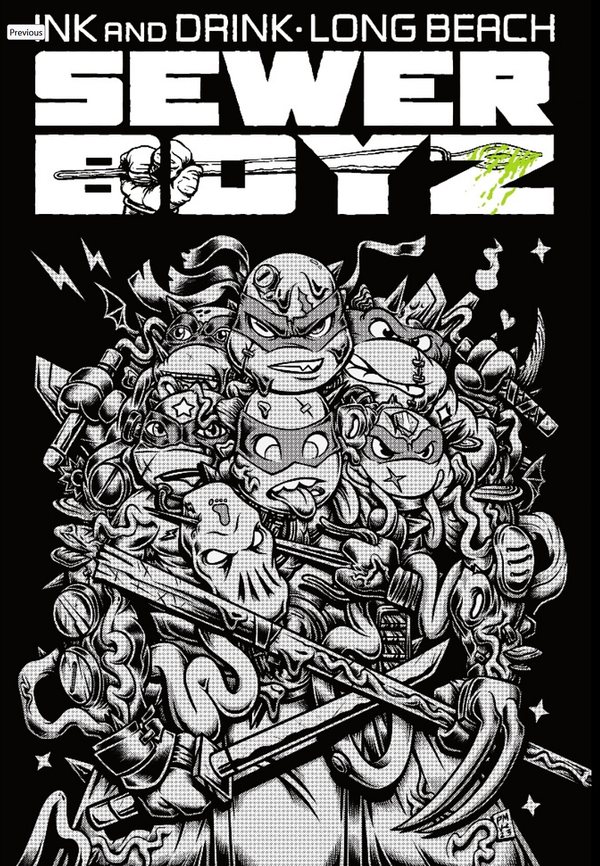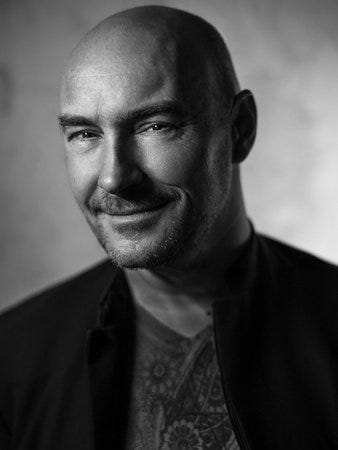Looking back at The Crow: Wild Justice
Forget Jared Leto’s Joker: Bill Skarsgård’s version of The Crow bears a striking resemblance to this 1997 Crow comic: Wild Justice.
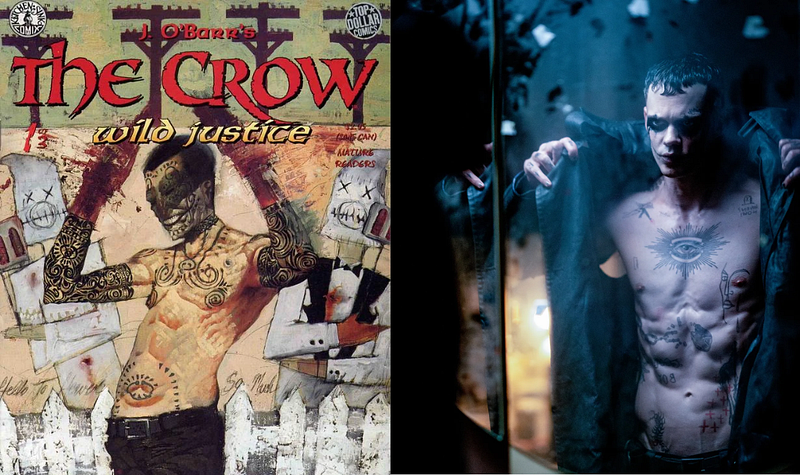
Since the release of the first photos of Bill Skarsgård as The Crow, he’s been compared to the Jared Leto Joker. Which is fair enough: It was the first thing that crossed my mind as well. But I soon remembered an older touchstone: The Crow: Wild Justice mini-series from 1997.
The new Crow film is clearly not based on Wild Justice — Skarsgård plays Eric Draven, not Wild Justice’s Michael Korby — but the visual similarities makes now a good time to look back at this unusual book.
Wild Justice was the third The Crow sequel published by Kitchen Sink in the mid-1990s. Written by Jerry Prosser and illustrated by Charlie Adlard, it was the first of this series to be created without any contribution from The Crow creator James O ‘Barr, who plotted and provided covers for the first sequel, Dead Time, and did covers for the second sequel, Flesh and Blood. He has no credits on Wild Justice aside from creating The Crow.
Writer Prosser was and still is best known at the time for his work at Dark Horse. Adler was fresh off his run on the hit X-Files comic book series, and had spent time working on 2000 AD and other British comics. He would go on to draw the bulk of the Walking Dead series (my recent favorite Damn Them All).
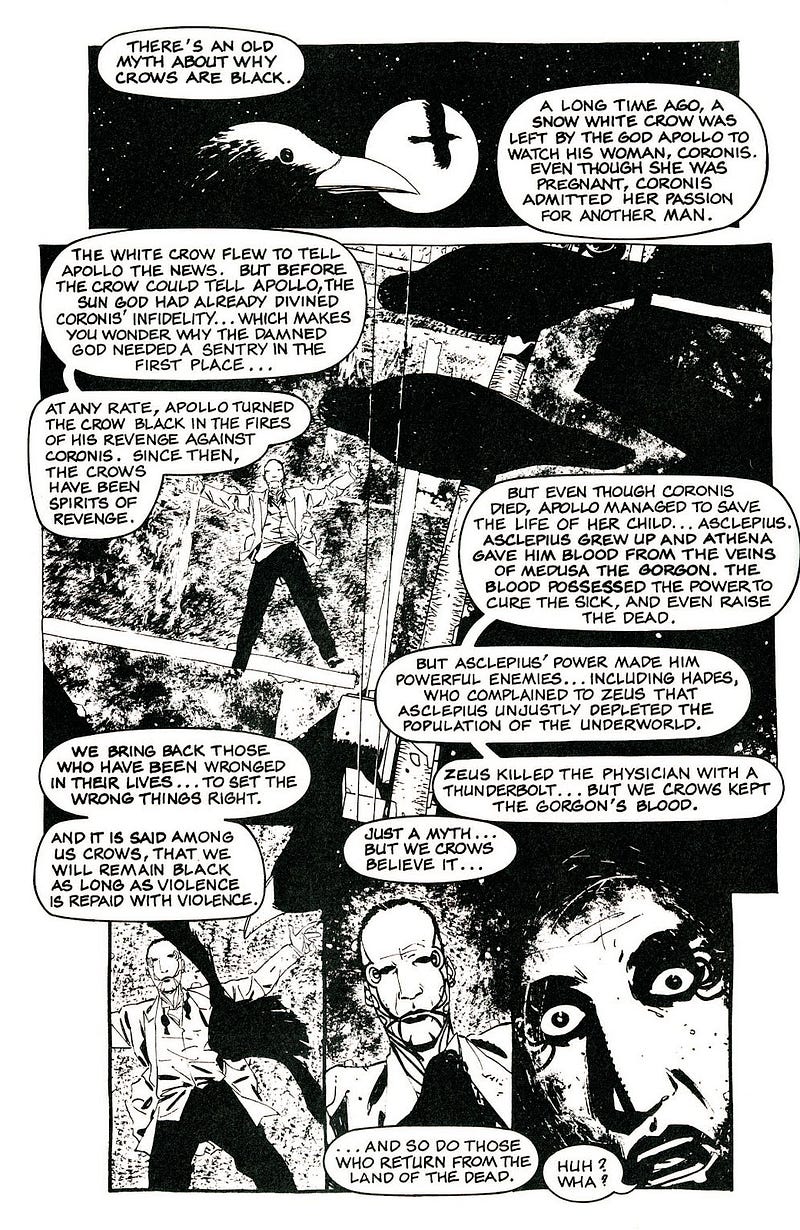
Besides the unusual character design, there are a couple of things that set Wild Justice apart from its predecessors. One is that it establishes an explanation for how The Crow operates, based on the Greek myth of Coronis. Another is that rather than being a straight-forward revenge tale, this one deals in themes of redemption and forgiveness. Unfortunately the structure and pacing undermine what could have been a great story, rendering it instead a mediocre one at best.
The tale is told over 3 issues/chapters, each told from a different perspective. The first is told from Michael Korby, Wild Justice’s Crow. Korby and his wife Jan are on their way to their honeymoon when they’re stopped by two car jackers. Jan fights back and the carjackers panic and kill both newly weds. Korby comes back to life 15 years later. He spends some time exploring his powers and hits up the library to learn that one carjacker, the one who killed him, was arrested, but that the one who killed Jan escaped punishment. The one who was arrested is about to be released from prison. There’s also some exposition that explains that Crow use Gorgon’s blood somehow acquired from Coronis’s son Asclepius to bring people back from the dead and give them powers. Korby’s strange tattoos are the mark Gorgon’s blood, not something he had before he died.
Apart from the Greek mythology, this is by now a very familiar story: Man and his beloved are killed in a senseless crime. Man comes back for revenge. Wild Justice is more than this sort of story, but you wouldn’t know it from this first issue. Prosser spends the entire first-third of story retreading familiar ground.
The second issue/chapter is where it gets interesting. It’s told from the POV of Darryl, the carjacker who killed Michael and served 15 years in prison for it. We see that Darryl has changed his life in prison. The guards throw him a going away party on his last day. He takes some cake from his party to the infirmary for a prisoner too sick to attend. We learn see that Darryl is deeply remorseful for his actions and haunted by what he did. He returns home to his family who are all overjoyed to see him. We see that he is clearly not a man who deserves The Crow’s retribution. Then the other carjacker, Eric, shows up. The man who killed Jan and who Darryl went to prison for.
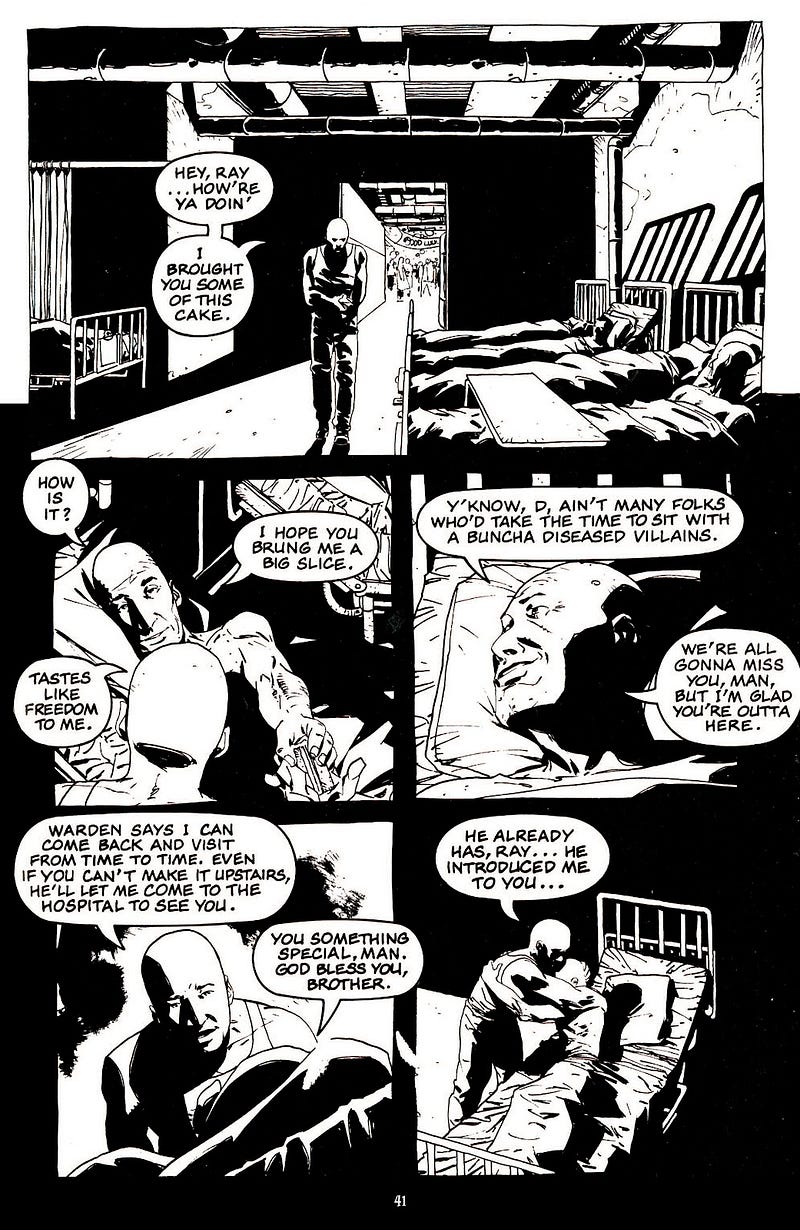
Korby, of course, knows nothing about Daryll and Eric other than that they killed him and Jan. He attacks them, then lets them go, saying he wants to toy with them.
This second chapter is the strongest. It shakes up the status quo for a Crow story, or a revenge story in general, by asking hard questions about redemption. Does killing Darryl make the world a better or worse place? On one hand, it sure doesn’t seem like he’s someone who deserves to die. On the other, we see him slipping right back into ruthless Eric’s orbit. Could Daryll have stayed on the straight and narrow or would he have been sucked back into a life of crime by his inability to say no to Eric? Unfortunately we never get a real look at this, let alone an answer.
In issue 3, the POV shifts to Detective Frank Jacobs who is investigating Korby’s assault on Darryl and Eric. He spends much of the issue mulling over the question of what justice is and whether it exists at all. Then Korby returns after less than a day for his revenge against the erstwhile carjackers.
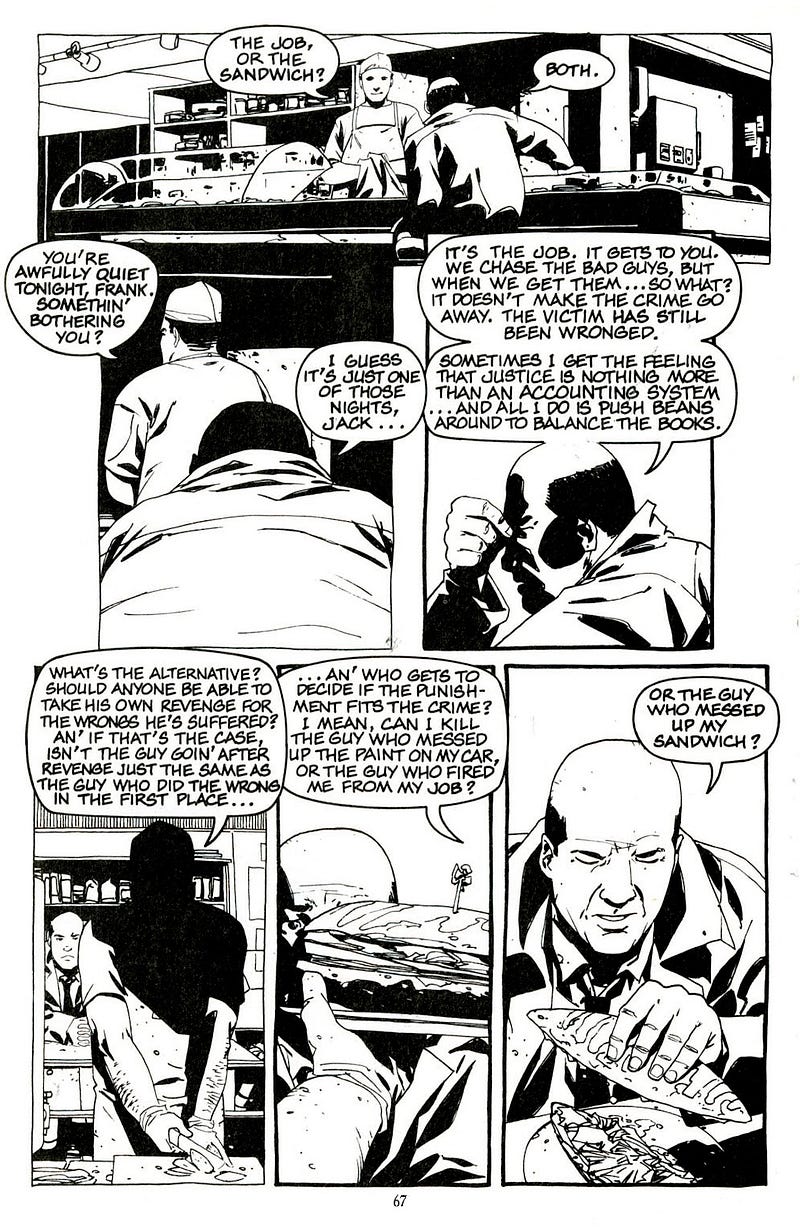
This had the makings of a great story, but it ends up feeling slow then incredibly rushed. Korby talks about toying with his victims, then comes back almost immediately to finish the job. If Prosser had just started with the second issue and filled in what happened to Korby and Jan through flashbacks, and had Korby toy with Daryll and Eric over the course of months or years, he might have had something special and still fit it into three issues.
The art, meanwhile, does the book few favors. It’s far from Adler’s best work, and is sometimes confusing. Like the writing, it’s just OK.
It’s disappointing because, like Daryll, this had so much potential.
